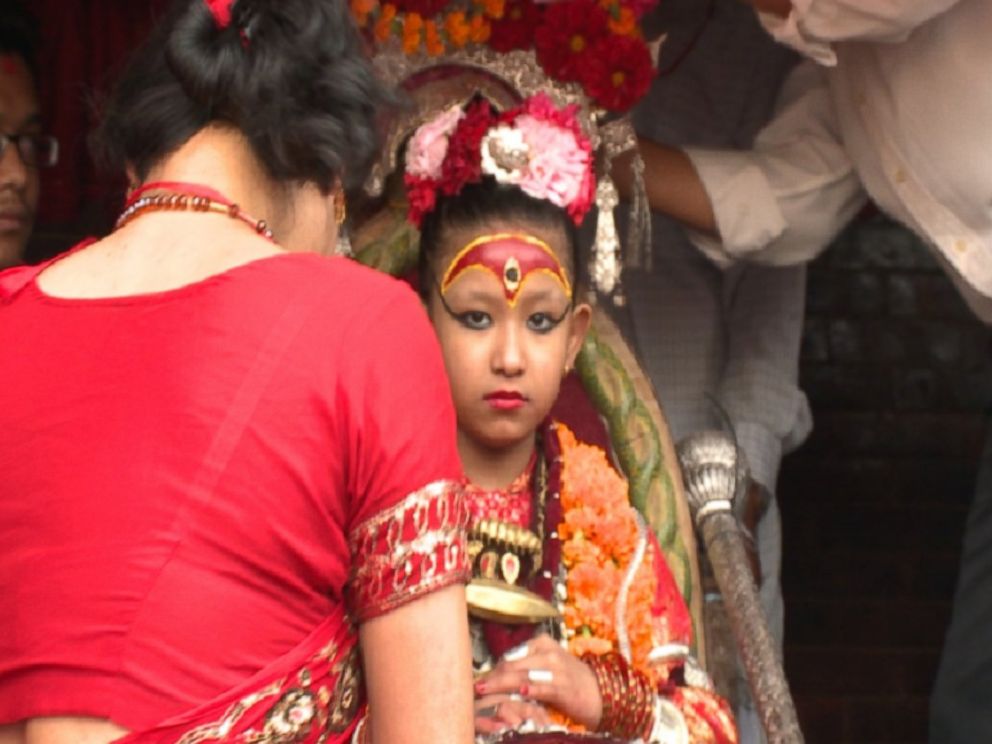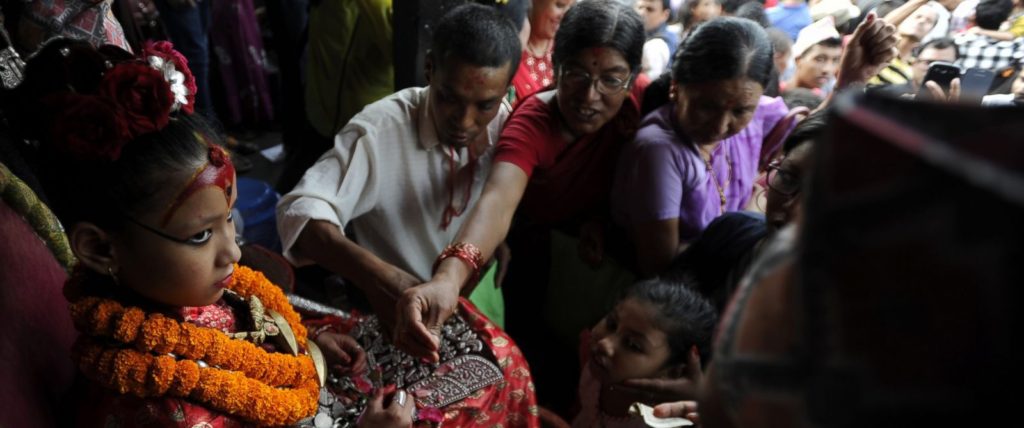
The seven year old girl in the picture above, is worshiped as a goddess in Patan in Nepal – she is only 7 years old who goes by the name, Yunika and she is a Kumari — one in a centuries-old tradition of living, breathing child goddesses.
It’s considered good luck to merely lay eyes on her.
According to her father, Ramesh Bajracharya:
“When my daughter was selected as a Kumari, I felt very happy. It’s because Kumari is hugely regarded and respected living goddess in Nepal.”
Yunika lives with her mother and father, who left their jobs to become her full-time caretakers.
She is not allowed to leave her residence except for holy festivals, and her feet are never supposed to touch the ground. Even inside her home, she is carried everywhere.
As for the meticulous customary makeup, her mother had to learn it through practice.
When asked about her daughter’s unusual childhood, her mother, Sabita Bajracharya, told ABC News said through a translator,

“I feel little sad that other children play outside, but her friends do come to play with her inside. Whatever she demands, dolls or any plaything, we fulfill her demands.”
The word “Kumari” means “unmarried girl” or “virgin.” She is worshipped by Hindus and Buddhists alike. To be chosen as a Kumari, a young girl, typically around 2 to 4 years old, must meet amazing specific standards.
First, her astrological chart must be considered favorable to the King of Nepal’s. Then, the girls are tested for 32 very specific physical attributes, including “eyelashes like a cow,” “thighs like a deer,” and a “voice as clear as a duck.” She is also put through a secret test for signs of fearlessness and serenity.
Once a girl is chosen, she is considered an incarnation of the Hindu goddess Durga. However, the Kumari are not Kumaris for life. Once they hit puberty, the young girls are forced to return to life as a mere mortal.
Rashmila Shakya served as a Kumari from age 4 to 12. Now 32 years old, she said,
“When I was a Kumari, [I was not] allowed to walk outside. So it was a little bit uncomfortable when, after I retired from the Kumari house, a little uncomfortable walking on the road.”
Some activists inside Nepal have criticized the Kumari tradition, calling it child labor. But in 2008, Nepal’s Supreme Court overruled a petition to end the practice, citing its cultural value.
In April 2015, Nepal was struck by a catastrophic 7.8 earthquake and 8,000 people were killed. Entire villages were destroyed and famous historical landmarks were flattened.
As a result, people in Nepal say that the Kumari became more important than ever and there has been an uptick in visitors seeking the luck of her blessings.
At the recent Hindu festival of rain, thousands came out to pay respects to 7-year-old Yunika, including one major VIP: the Prime Minister of Nepal.
Life as a Kumari can seem surreal and strange, but according to those who have lived it, this extraordinary childhood is a privilege.
Ex-Kumaris enjoy prestige their whole lives, as well as a lifelong pension from the Nepali government.













